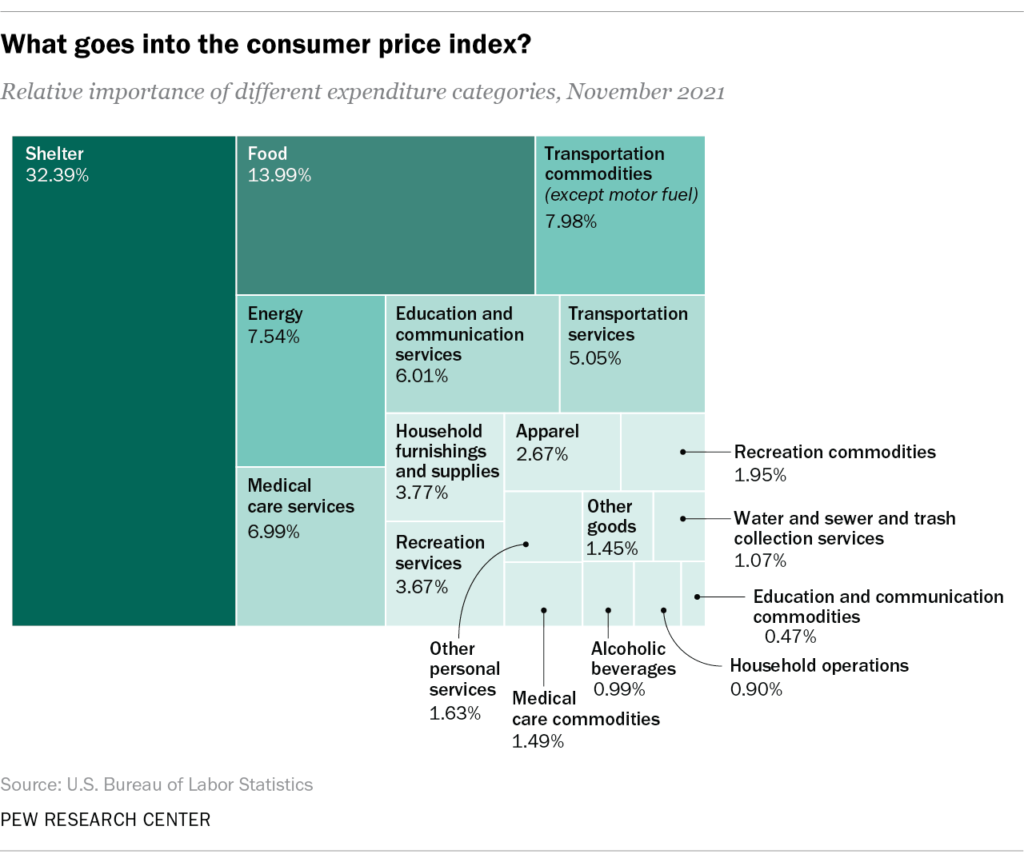The CPI Is A Construct
When people talk of a “price level” they have in mind the image of a level of a liquid which goes up or down according to the increase or decrease in its quantity, but which, like a liquid in a tank, always rises evenly. But with prices there is no such thing as a level. Prices do not change to the same extent at the same time. There are always prices that are changing more rapidly, rising or falling more rapidly than other prices – Ludwig von Mises
Thursday morning the BLS reported that inflation rose 8.2% year over year. So people naturally think that inflation is 8.2%. But it’s important to understand that there is actually no one level of inflation. There are only the prices of a variety of individual goods and services. The CPI is a statistical construct that tries to agglomerate all these individual prices into one number. It is a very imperfect abstraction.
First, let’s consider a simplified hypothetical. Imagine that rent was $2000/month, gas $5/gallon, and eggs $3/dozen a year ago. And now rent is $2100/month, gas $5.50/gallon, and eggs $2.70/dozen. What is the level of inflation compared to a year ago? How much should we weight the 5% increase in rent versus the 10% decrease in the price of eggs? There is no intrinsically right way to do this.
Turning to the actual CPI you can see in the graphic above the actual weightings the CPI gives to various categories of goods and services. The largest component is shelter at 32% – and it makes up about half of the so-called Core CPI – so let’s look at that. According to the September CPI Report Shelter prices increased 6.6% year over year and 0.7% month over month. And yet prices for homes and rent are actually falling as Jeremy Siegel pointed out yesterday on CNBC. There is a measurement problem here.
On Wednesday morning consumer staples giant Pepsi (PEP) reported that their average price increased 17% from a year ago. Some have argued that that is actually closer to the real level of inflation. However that may be my point here is simply that there is no one number that measures the level of inflation, only individual prices for a variety of goods and services. Therefore a more accurate way of describing inflation would be qualitative rather than quantitative. This is unsatisfying to our scientific culture which wants to measure everything mathematically but not everything that counts can be measured.
More By This Author:
Stunning ReversalPEP: Consumer Staples Are The Way To Go
Another 75 Point Hike?!




